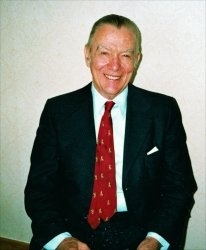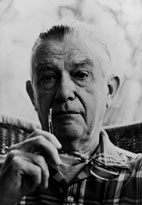 |
| (http://www.request.org.uk/ main/history/brand/brand01.htm) |
Dr. Paul Brand was an orthopedic surgeon who used reconstructive surgery to correct deformities of leprosy in the hands and the feet. Among his many merits was the fact he helped humankind to better understand and treat leprosy. His most significant research brought a new understanding of the important role of pain in people’s lives. His idea is that when we are suffering but cease to respond to pain, the consequence of the pain is likely to cause more damage to us. The absence of feeling pain weakens us, either because it’s so overwhelming that we become numb, or because we alleviate the pain through a variety of artificial means, or become used to the pain and insensitive to it.
Doctors Paul and Margaret Brand pioneered work with lepers in India. They developed new medical techniques that allowed lepers to function in society in spite of their handicaps. Dr. Paul Brand, a British subject born in 1914 to missionary parents, grew up in India until 1923, and studied in England from 1923 until 1946. He returned to India as the first Professor of Orthopaedics and Hand Research at the Christian Medical College and Hospital in Vellore, India (concisely referred to as “CMC, Vellore”). He left India in 1965 after performing thousands of reconstructive and other surgical procedures. In 1967 he moved to the National Leprosarium in Carville, Louisiana, the only leprosy hospital in the U.S., at the invitation of the U.S. Public Health Service. Dr. Brand was Director of the Rehabilitation branch at this hospital until his retirement in 1986. He then moved to Seattle, WA, where he died on July 8, 2003 at the age of 89.
 |
| (http://www.zondervan.com/ images/contributor/medium/brandp.jpg) |
To help treat lepers, he developed surgical methods to straighten crooked bones, especially in their hands and feet. He performed tests on muscle strength and sensation to determine the proper surgical intervention for people suffering from hand and foot problems. He proved that the loss of fingers and toes in leprosy patients was caused by infection and was a preventable disease when properly treated.
Until Dr. Brand developed his reconstructive surgical procedures, most people believed that lepers lost their fingers and toes because of decaying flesh. However, Dr. Brand's research proved that lepers’ malformations were tied to their loss of ability to feel pain. He called his discovery "the gift of pain". He found that the disease numbed the sensation of pain in parts of the body to the point where leprosy patients were actually injuring themselves, through their insensitivity.
Leprosy affects the nervous system, and triggers tissue damage, which can escalate when its victims ignore early warnings of pain. Dr. Brand not only answered questions about leprosy deformities and their causes, but was able to recommend what could be done to heal patients and prevent their disease from spreading.
 |
| Dr. Brand at the groundbreaking ceremony at Christian Medical School in Vellore, India (http://pmrcmcv.tripod.com/ri/dig.jpg) |
Dr. Brand was a medical consultant to the Leprosy Mission and Clinical Professor Emeritus of Orthopaedics, at the University of Washington. He continued to contribute to leprosy work through his role in the World Health Organization and Leprosy Mission International (for which he served as president from 1993 to 1999).
In 1952, he was Hunterian Professor of the Royal College of Surgeons. In 1960 he received the Albert Lasker Award for outstanding leadership and service in the field of rehabilitation. In 1961, Queen Elizabeth II honored Dr. Brand as Commander of the British Empire for contributing to good relations between India and Great Britain. In 1977, he received the Damian-Dutton Award for his contributions in the prevention of disabilities due to leprosy. Finally, he received the U.S. Surgeon General's Medallion for his rehabilitation work in Carville, Louisiana.
 |
His thesis, "Clinical Mechanics of the Hand," is still regarded as an authoritative reference on reconstructive surgery for hand surgeons, physiotherapists and other hand specialists. Dr. Brand was the author of 100 scientific papers and six books. He co-authored three inspirational books with Philip Yancey: Fearfully and Wonderfully Made, In His Image, and Pain - The Gift Nobody Wants. Dorothy Clarke Wilson wrote a biography on him called Ten Fingers for God.
 |
| (http://www.hrsa.gov/hansens/ images/HISTORY/HISTORY_PWB_PIC-A.jpg) |
As a hand surgeon, his character qualities included compassion, commitment to work, and humility. He was known for his passionate commitment and compassion for people. Dr. Brand believed that pain was indispensable. He wrote: "God designed the human body so that it is able to survive because of pain."
Page created on 11/6/2009 12:00:00 AM
Last edited 1/6/2017 4:47:36 PM
